How to See Japan's Imperial Treasures
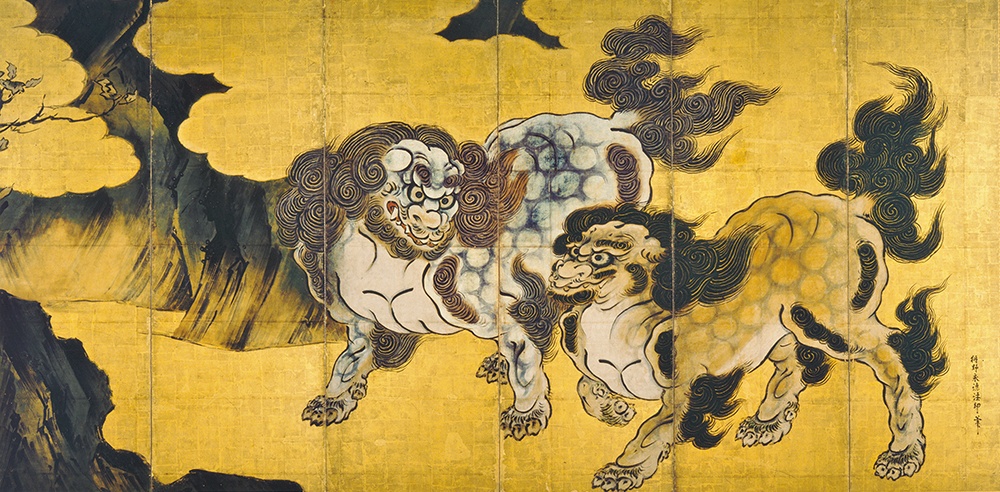
“Chinese Lions” (right screen), 16th c., by the famous painter Kano Eitoku. This splendid National Treasure will be on view at The Museum of the Imperial Collections, Sannomaru Shozokan, May 21-June 23, 2024.
Arts writer Alice Gordenker takes us inside a little known repository of top-quality Japanese art.
To view Britain’s Crown Jewels, you go to the Tower of London. To appreciate art amassed during the former Russian empire, you travel to the State Hermitage Museum in St. Petersburg. But what about Japan? Is there one special place to see the treasures passed down in Japan’s Imperial family?
There is: It’s called The Museum of the Imperial Collections, Sannomaru Shozokan. Yet despite a top-notch collection, modern facilities, and a convenient location near Tokyo station, almost no one I know has heard of it.
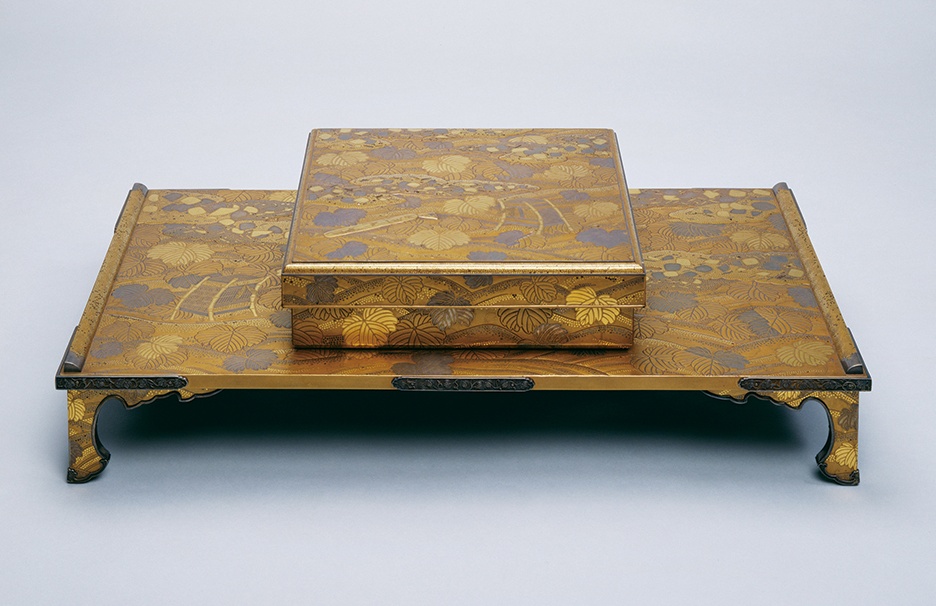
A desk and box for writing tools with an enchanting design of a road among ivy. Made of lacquered wood with maki-e in the Momoyama period (16th c.), it was previously part of the furnishings in the Kyoto Imperial Palace. On view March 12-April 7, 2024.
Why so unknown? Probably because the museum is relatively new and is hidden from the street behind massive stone walls. And, let’s face it, the name is tough to remember. (It helps to know that san-no-maru (“third enclosure”) is a reference to the outer walls of Edo Castle, which once stood in the same grounds, and that shozokan is an old-fashioned term for imperial treasure houses.) But this museum is well worth a visit. In fact, I'd recommend dropping by regularly. Let me explain why.
Lives of Culture and Refinement
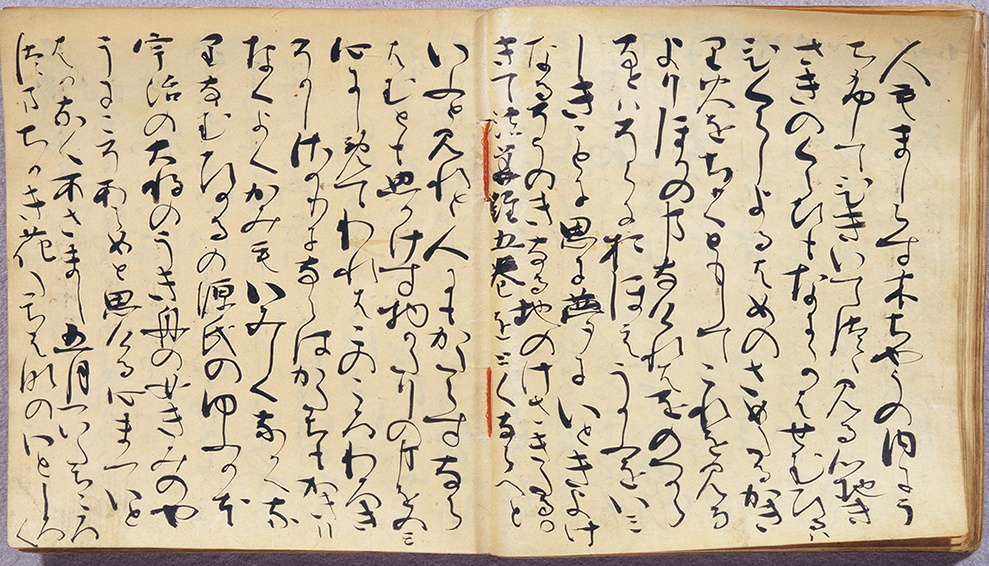
Manuscript of the “Sarashina Diary,” a classic of Japanese literature, copied out in exquisite calligraphy by the famed 13th c. poet Fujiwara no Sadaie (also known as Fujiwara no Teika). This National Treasure is on view through May 12, 2024.
Japan's emperors and their families were raised to be well versed in the arts, cultivating deep knowledge of the waka poetry and music of different eras. Within their palaces, they collected and carefully preserved important examples of classical texts, calligraphy, and musical instruments. They also commissioned paintings and crafts from the finest artists and craftspeople of their reigns, supporting the arts at the highest level while creating living and entertaining spaces of splendid elegance.
In 1989, the then newly enthroned Emperor Akihito and his mother donated a large collection of treasures to the people of Japan. These works, which had been passed down for centuries within the Imperial Family, were of great artistic and historical significance. The Sannomaru Shozokan was established a few years later, in 1993, to conserve the collection and make it accessible to researchers and the public. But the original building proved too small for those purposes and a large-scale expansion is now in progress.
Art from Kyoto Palaces
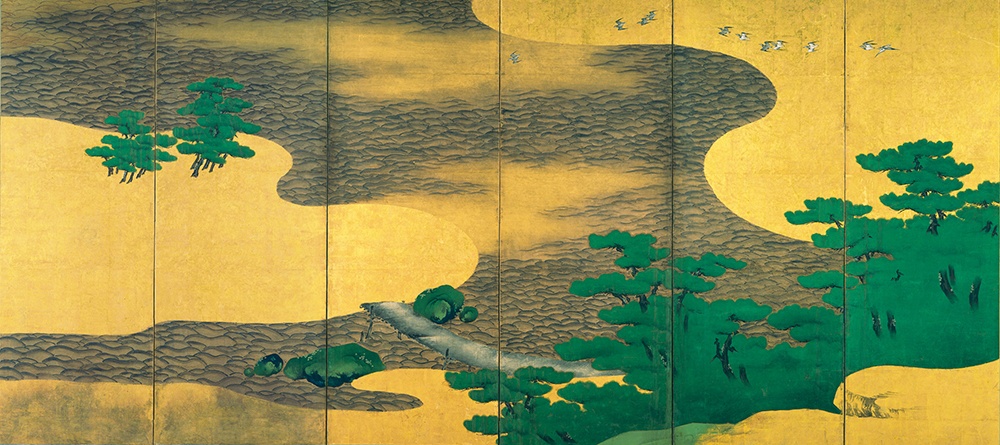
Right half of a pair of folding screens titled "Pines on the Shore," painted in 1605 by Kaiho Yusho. On view April 9-May 12, 2024.
To mark completion of the first phase of construction, last November the museum launched a special four-part exhibition, The Aesthetics of the Imperial Court: Beauty Passed Down through the Ages. We're now in the third part, "Artworks that Adorned the Early Modern Imperial Palaces," which runs through May 12. This phase highlights treasures from the Kyoto Imperial Palace that span a wide range of genres, from screen and scroll paintings to musical instruments and mirrors and other tools for daily life.
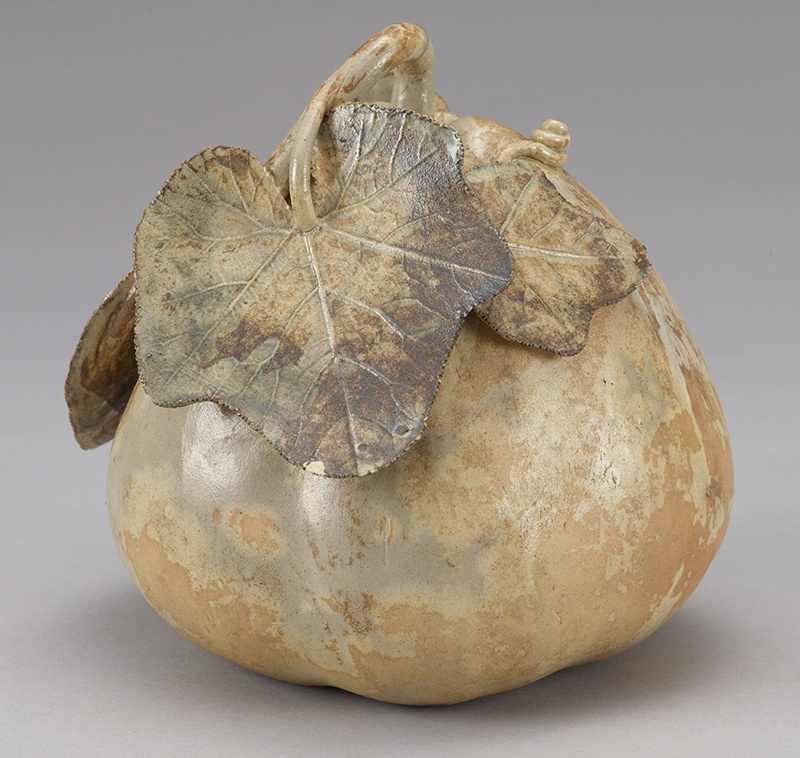
Gourd-shaped ceramic incense burner. Shugakuin ware, Edo period (18th c.). One of the leaves is a lid that can be lifted off to insert the incense. On view through May 12, 2024.
Some of the pieces are things you simply won't see in other museums. On a recent visit, I was delighted to get my first-ever glimpse of Shugakuin ware, a type of ceramics about which I had only heard. I was also glad for the chance to see a very rare manuscript of the "Sarashina Diary," a memoir that chronicles a woman's life in eleventh-century Japan, and a low desk and matching writing box with an ivy design that references another favorite from classic Japanese literature, The Tales of Ise. (Mount Utsu, a place the hero passes through on his way east from Kyoto, is a famous place for viewing ivy in moonlight.)
Gifts of Tribute
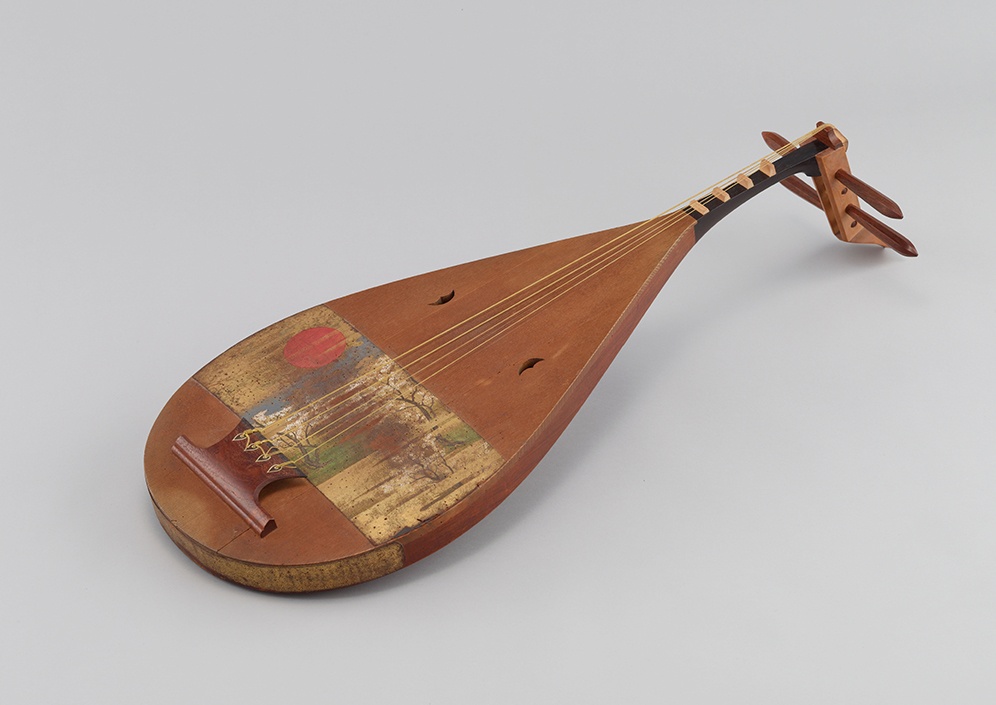
A biwa (lute) named 'Asahi.' Gold and color on quince wood, 1854. On view April 9-May 12, 2024.
The exhibition also introduces examples of the lavish gifts presented on special occasions to the Imperial Family, such as a biwa lute commissioned by Tokugawa Nariaki (1800-60), the daimyo of Mito Province. The front is painted in gold and color with a scene of cherry blossoms in full bloom, while the back is carved with what is thought to be his own poem in stylish calligraphy.
Other gifts to the Imperial Family, now part of the museum's collection, include a massive painting of Mt. Fuji by Yokoyama Taikan (1868-1958) and a sculpture in cast silver by Yamazaki Choun (1867-1954) depicting riders on horseback engaged in a furious race.
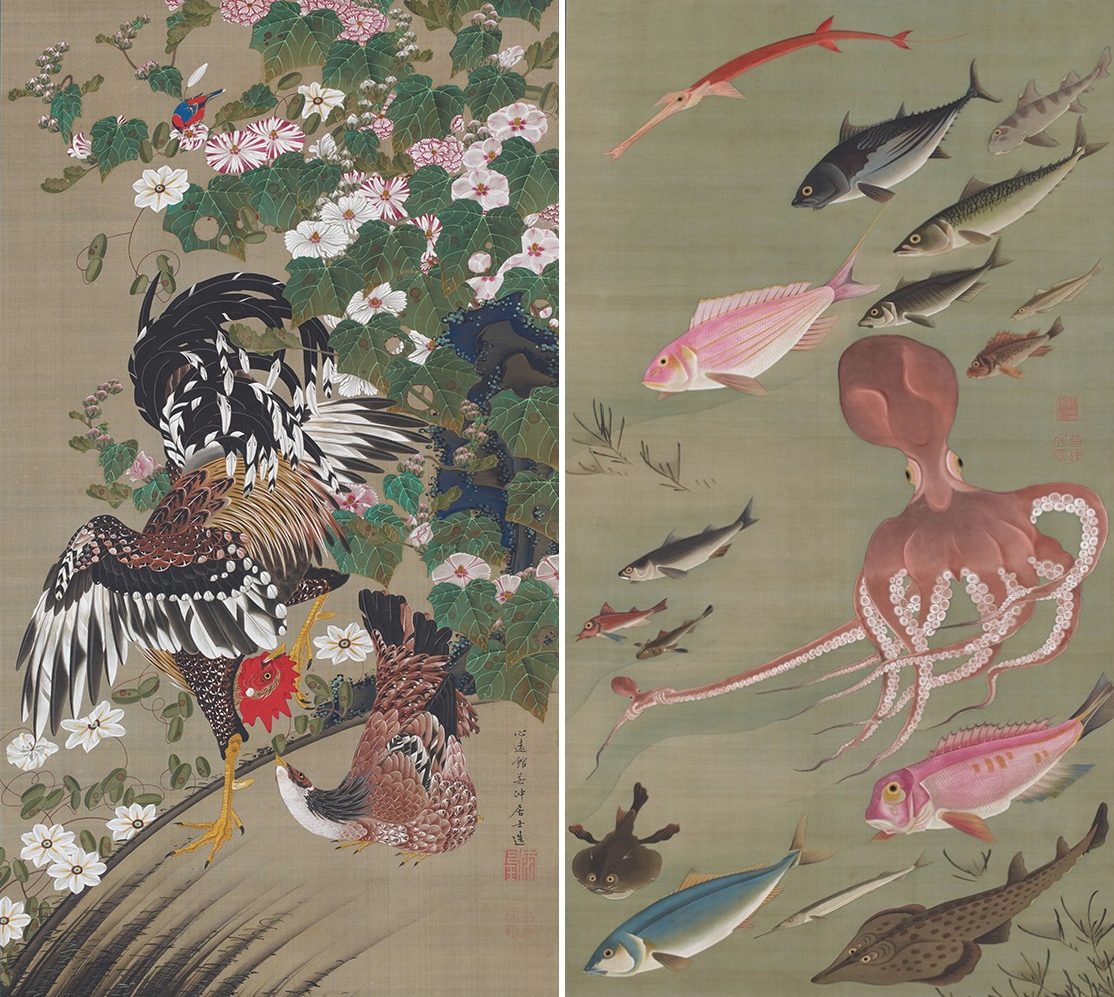
From the 18th c. series "Colorful Realm of Living Beings" by Ito Jakuchu, "Rose Mallow and Fowl" and "Fish." These 18th c. National Treasures will be on view May 21-June 23, 2024.
The fourth and final part of the current exhibition, scheduled for May 21-June 23, 2024, will present selected masterpieces from the collection. Upcoming highlights include the Kano Eitoku lion screen pictured at the top of this article, and scroll paintings by Ito Jakuchu (1716-1800) from a famous series that celebrates the variety of life in the natural world.
Much of this art, and particularly the paintings, is easily damaged by exposure to light. To balance the twin goals of preserving the works while also sharing them as widely as possible, the museum puts certain items on display for only limited periods of time. So if your heart is set on seeing a particular work, check the museum's website carefully before visiting. (You will need to go to the website in any case because reservations are required.) Look for the "list of works," posted for each exhibition, which gives the exact dates each work will be on view. This one is current at the time of this writing. )
More Good Things to Come

Paper box and writing box with design of fireflies by the Uji River, an Edo-period masterpiece (1775) in lacquered wood with maki-e by Iizuka Toyo I. On view May 21-June 2, 2024.
At present, the exhibition area consists of just two large rooms, each presenting a dozen or so works. But when the expansion is complete, in 2026, the museum will have considerably more space in which to share the collection. To date, many of the pieces in the museum's collection have never been shown to the public, with a significant number of never-before-seen treasures awaiting their turn.
The Museum of the Imperial Collections, Sannomaru Shozokan brings forth works that for centuries were seldom seen. Art that once privately delighted an emperor may now be enjoyed by everyone. And since no two exhibitions are the same, repeat visits should be handsomely rewarded.
Visiting the Museum
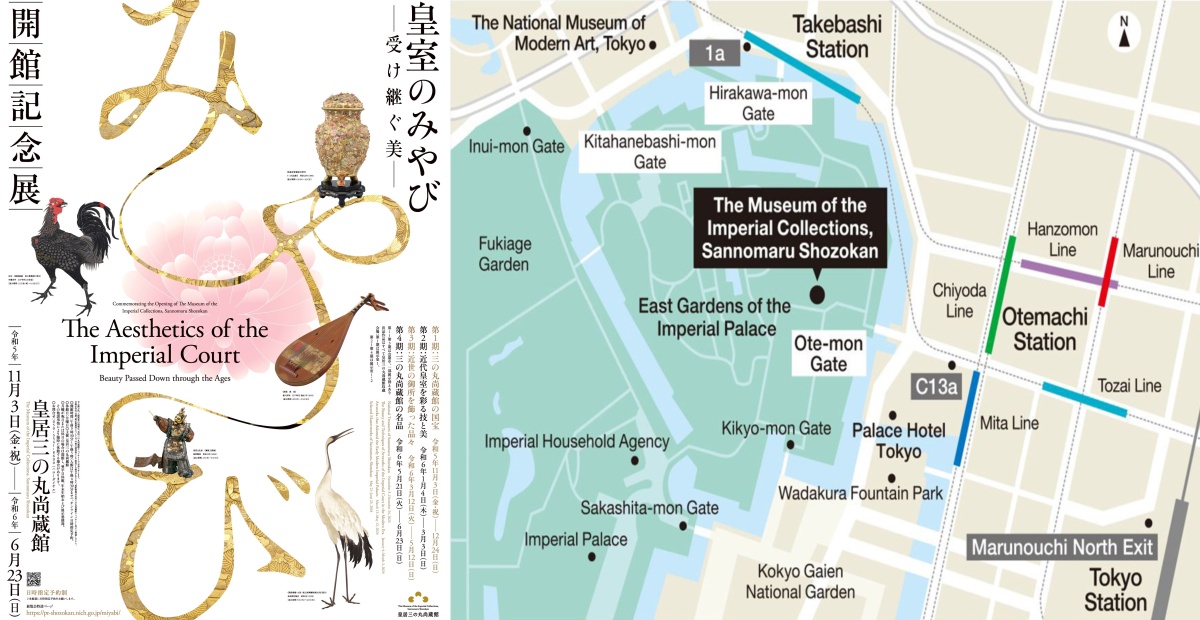
Commemorating the Opening of The Museum of the Imperial Collections, Sannomaru Shozokan—The Aesthetics of the Imperial Court: Beauty Passed Down through the Ages
Part 3: "Artworks that Adorned the Early Modern Imperial Palaces" (March 12-May 12, 2024)
Part 4: "Selected Masterworks of Sannomaru Shozokan," (May 21–June 23, 2024)
(Check online for full exhibit rotation schedule.)
The Museum of the Imperial Collections, Sannomaru Shozokan
1-8 Chiyoda, Chiyoda-ku, Tokyo 100-0001
(Within the East Gardens of the Imperial Palace; entrance is through the Otemon gate)
To prevent crowding, entry is timed and by advance reservation. Regular admission 1,000 yen, 500 yen for university students. Free with relevant identification for high school students, those 18 and younger and 70 and older, and persons with disabilities. There is a wheelchair ramp at the entrance and accessible restrooms.



